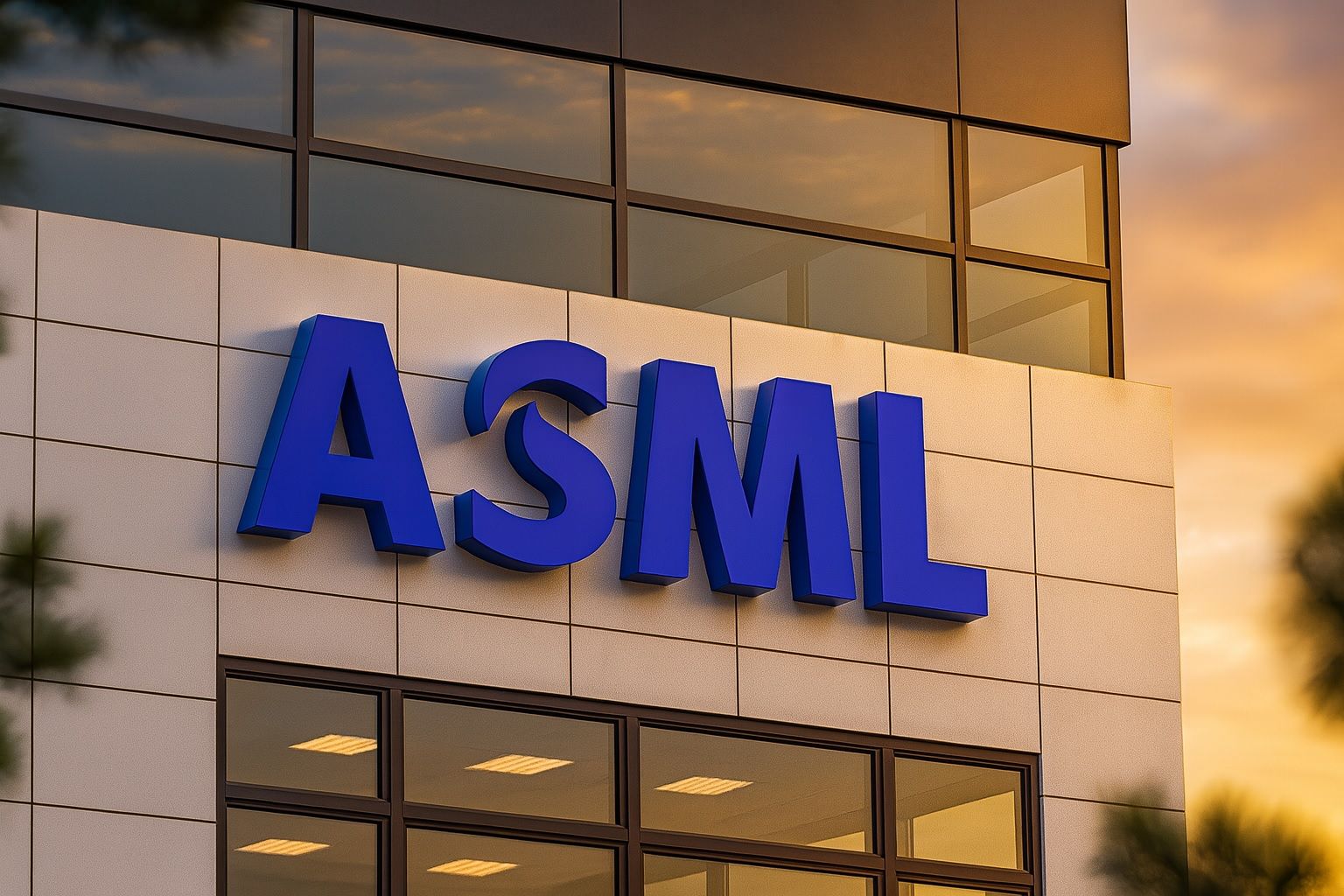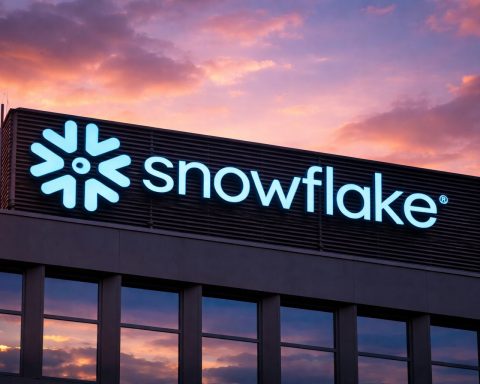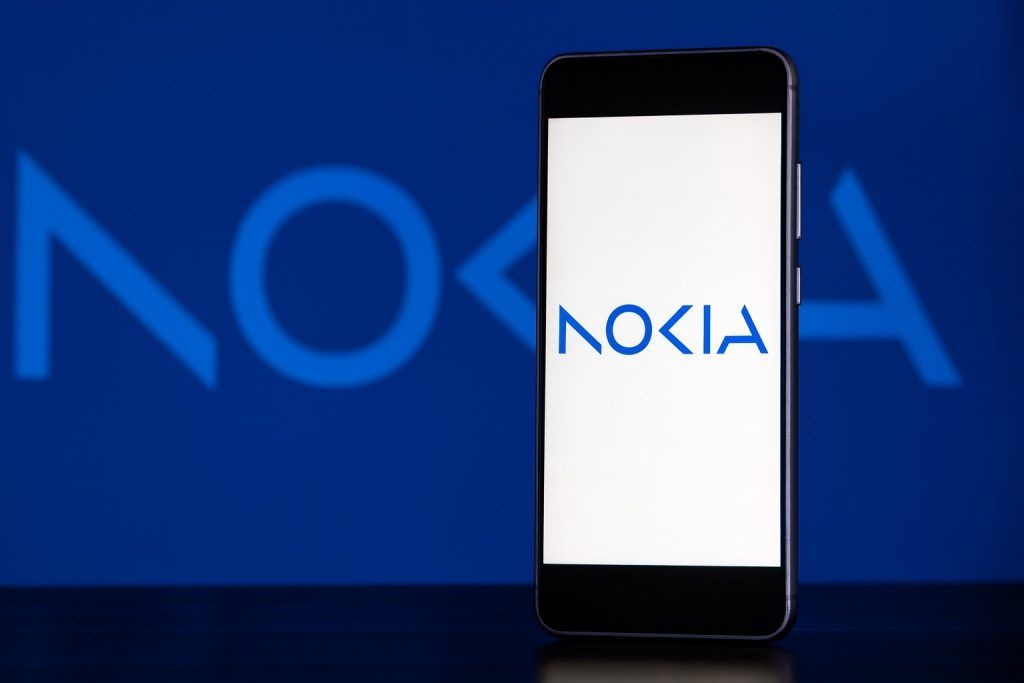- Shares Rebound: ASML Holding’s stock (NASDAQ: ASML) climbed on October 23, 2025, closing around $1,019 – regaining ground after a mid-week dip [1]. The stock remains near all-time highs (~$1,059) after a dramatic rally of ~30–35% since early September, far outpacing the broader semiconductor index [2].
- Strong Q3 Earnings: The Dutch chip-equipment giant posted Q3 2025 net sales of €7.5 billion and net income of €2.1 billion, essentially in line with forecasts [3]. New bookings came in at €5.40 billion, slightly beating expectations [4] and signaling robust demand for ASML’s advanced chipmaking machines.
- Cautious 2026 Outlook: ASML reaffirmed ~+15% revenue growth for 2025, but warned that 2026 sales may only be flat year-on-year at best [5]. Management said China’s demand – nearly one-third of 2025 orders – will “decline significantly” next year [6] due to export curbs and a market cooldown. The company “does not expect 2026 total net sales to be below 2025” [7] (~€32.5 billion) and will provide a detailed 2026 outlook in January.
- AI Boom Fueling Demand: CEO Christophe Fouquet noted “continued positive momentum around investments in AI” driving orders for both advanced logic and memory chip equipment [8]. A flurry of AI mega-deals – including OpenAI’s plan to spend $1 trillion+ on new data centers [9] – is boosting expectations for chipmakers’ capacity expansion. Those massive plans portend surging demand for ASML’s EUV lithography tools, essential for producing cutting-edge AI chips.
- Strategic Moves: Capitalizing on the AI wave, ASML invested €1.3 billion for an ~11% stake in French startup Mistral AI to embed machine-learning models into its systems [10]. Fouquet called the partnership “strategic” and “value-enhancing” [11], and analysts agree it’s likely easier to develop new AI-driven products via partnership than in-house [12]. ASML also named 25-year veteran Marco Pieters as its next CTO (effective 2026) to drive innovations like next-gen High-NA EUV technology [13].
- Analyst Sentiment: Wall Street remains bullish on ASML’s long-term prospects. The stock carries a “Moderate Buy” consensus rating with an average 12-month price target around $1,050 [14]. Several firms hiked targets post-earnings (e.g. JPMorgan to $1,175, Susquehanna $1,150) citing ASML’s “unique, irreplaceable” role in enabling AI chips [15]. However, some warn shares (≈30× 2025 earnings) are priced for perfection [16]. A contrarian note even called the AI spending surge a “risky setup” if capital expenditures peak and then recede [17].
ASML Shares Rally on AI Hopes
ASML Holding N.V.’s stock continued its upward charge as of October 23, 2025, buoyed by feverish investor optimism around the AI boom. The shares rose about 1% on Thursday to roughly $1,019 by the closing bell [18], rebounding after a couple days of profit-taking. This puts ASML just shy of its all-time high (~$1,059) and caps off a stunning run – the stock has surged over 30% since early September, vastly outperforming the broader chip sector [19]. “It’s clear that the sentiment has changed” around ASML, observed Morningstar analyst Javier Correonero ahead of the company’s earnings, as investors bet big on its central role in the AI chip supply chain [20]. Indeed, ASML’s rally in recent weeks has been nothing short of meteoric: by mid-October the stock was trading near record levels (around €880, or $1,030) [21], up roughly one-third in just six weeks and far outpacing the Philadelphia Semiconductor Index [22].
The excitement is rooted in ASML’s unique position at the heart of advanced chip production. The company is the world’s only maker of extreme ultraviolet (EUV) lithography machines – complex $300+ million tools used to etch the tiniest circuits on cutting-edge chips [23]. As AI development drives unprecedented demand for high-performance chips, there is growing confidence that orders for ASML’s equipment will only increase. Traders also note that technical momentum has been strong: the stock recently broke above key moving averages, though some indicators (like the RSI above 70) suggest short-term buying may have been overdone [24]. After such a steep climb, a breather or volatility “would not be surprising,” according to analysts. Still, ASML’s market capitalization near $400 billion and roughly 41× P/E ratio reflect investors’ willingness to pay a premium for its dominant franchise [25].
Earnings Beat, AI Orders Surge in Q3
The latest catalyst for ASML’s strength was its third-quarter 2025 earnings, which underscored solid fundamentals and surging AI-related demand. On October 15, ASML reported Q3 net sales of €7.516 billion and net income of €2.125 billion, essentially meeting analysts’ expectations [26]. This result extended ASML’s streak of hitting or beating forecasts for the eighth straight quarter. Critically, net bookings (new orders) came in at €5.40 billion for the quarter [27], slightly above consensus. That metric – the industry’s most-watched figure for equipment makers – indicates that major chipmakers are still aggressively planning future production capacity. In fact, ASML’s Q3 bookings beat forecasts of ~€5.36 billion [28], a bullish sign that AI-fueled orders are filling the pipeline. “Our third-quarter sales…were in line with guidance, reflecting a good quarter for ASML,” CEO Christophe Fouquet noted, adding that the company saw “continued positive momentum around investments in AI” driving demand across both advanced logic processors and memory chips [29].
The company’s guidance reinforced that narrative. ASML reiterated its full-year 2025 outlook for ~15% revenue growth (versus 2024) and issued an upbeat forecast for Q4, targeting €9.2–9.8 billion in sales with 51–53% gross margin [30]. If achieved, that would mark a strong finish to the year. However, management simultaneously struck a note of caution looking ahead to 2026. It warned that demand from China – which accounted for nearly one-third of ASML’s orders in 2025 – is set to “decline significantly” next year [31]. Due to that anticipated drop, ASML said 2026 revenue will likely be flat relative to 2025 (around €32–33 billion) at best [32]. Chief Financial Officer Roger Dassen emphasized on a call that the weakening China outlook is a “normalization” after two boom years and “not due to [panic] stockpiling” amid U.S.-China trade tensions [33]. In other words, Chinese chipmakers had been ordering heavily and are now pausing, rather than vanishing entirely.
This tempered 2026 outlook initially disappointed some analysts, who had hoped for a more upbeat tone on post-2025 growth [34]. “It could have been a stronger message,” one commentator mused of ASML’s cautious guidance [35]. The stock actually dipped slightly right after the earnings report, reflecting those tempered expectations. But importantly, ASML made clear it does not expect 2026 sales to drop below 2025’s level [36] – effectively assuring investors that a downturn is not on the horizon, even if growth pauses. And many on Wall Street see any 2026 plateau as only a temporary speed bump. In a note, JPMorgan analysts wrote that they believe fears of a worse-than-expected 2026 will be “put to rest”, and that the market will instead focus on “the extent the company can grow in 2027” [37]. In other words, beyond the near-term China lull, ASML’s longer-term growth story appears intact.
AI Megadeals Boost Chip Equipment Demand
Booming investment in artificial intelligence has been the game-changer for ASML’s fortunes this year. In recent months, a wave of mega-deals and jaw-dropping spending plans in the AI arena have dramatically brightened the outlook for chipmakers – and by extension, the companies that supply them with fabrication tools. Perhaps most eye-opening is OpenAI’s announced plan to build $1 trillion or more in data center capacity over the coming years [38]. This unprecedented bet on AI infrastructure (driven by exploding demand for AI model training and inference) implies orders for millions of cutting-edge chips – and each of those chips relies on lithography machines like ASML’s to be manufactured. As Reuters noted, such plans “portend more demand for chips, which make up around half the cost of data centres” [39] – a positive leading indicator for semiconductor equipment makers.
It’s not just OpenAI. Multi-billion dollar partnerships between AI developers and chip giants are being inked across the industry. In the past quarter, firms like Meta and Oracle have announced major deals with suppliers such as NVIDIA, AMD, Intel, and Samsung [40] to secure future semiconductor capacity for AI. The frenzy has sparked a broader chip market rally on hopes of massive datacenter expansion, lifting ASML and its peers [41]. “Every memory chipmaker is likely to increase production capacity for AI – Micron, SK Hynix, Samsung, even Chinese players,” observed Michael Roeg, an analyst at Degroof Petercam [42]. In other words, across both logic and memory segments, manufacturers are gearing up to build more AI-oriented chips, which directly drives demand for ASML’s lithography tools.
ASML’s Q3 results offered evidence of this trend: the company’s order backlog swelled to a record ~€33 billion [43] as customers locked in future machine deliveries. Its biggest customer, Taiwan’s TSMC – which fabs almost all of NVIDIA’s high-end AI chips – is expected to boost purchases of EUV machines to equip its upcoming 3nm and 2nm fabs [44]. Even memory chip makers (who struggled in recent years) are now ramping up investment in next-gen chips used for AI and data centers [45]. During the third quarter, TSMC reported its own revenue jumped ~30% year-on-year on surging AI chip orders [46], a signal that capacity expansion (and tool orders) are following close behind.
ASML itself is actively positioning to ride this AI wave. In September, the company made a splash by announcing a €1.3 billion investment in Mistral AI, a French artificial-intelligence startup [47]. The deal gives ASML roughly an 11% stake in the young company and, more importantly, access to Mistral’s cutting-edge AI models. The goal is to integrate these AI capabilities into ASML’s lithography and metrology systems to improve their performance and the chip yields for customers. CEO Christophe Fouquet hailed the tie-up as “strategic” and “value-enhancing” for ASML’s business [48]. Analysts have also applauded the move. “For ASML it is probably easier to develop AI-based products through a partnership than to do this in house,” noted Jan Frederik Slijkerman of ING, pointing out that the collaboration lets ASML rapidly infuse AI into its tools without starting from scratch [49]. In effect, ASML is leveraging Mistral’s expertise to make its own machines smarter and more efficient – a savvy play that could pay dividends as chipmaking processes become ever more complex.
At the same time, ASML continues to advance its core technology roadmap. The company recently appointed Marco Pieters – a 25-year company veteran – as its new Chief Technology Officer (effective January 2026) [50]. Pieters will oversee the development of next-generation lithography systems, including the forthcoming “High-NA” EUV machines that promise to push chip miniaturization even further. ASML has already shipped its first pilot High-NA tool to a research client, and broader rollout is expected in the next couple of years. This emphasis on innovation and R&D ensures ASML intends to remain indispensable to chipmakers chasing Moore’s Law in the AI era.
Geopolitics: China Curbs and Contingencies
While the AI boom is a boon, geopolitical factors add a layer of uncertainty to ASML’s outlook. The company is headquartered in the Netherlands and has been caught in the crossfire of U.S.-China tech tensions. Export controls spearheaded by the U.S. government currently bar ASML from selling its most advanced EUV lithography machines to China [51]. These restrictions, in place for a few years now, mean Chinese chip fabs cannot access ASML’s top-tier tools – a significant handicap for China’s semiconductor ambitions, and a point of diplomatic contention. In response, China has started to retaliate in kind: in early October, Beijing imposed new export curbs on certain rare-earth metals crucial for semiconductor manufacturing [52]. ASML uses some of these specialized materials in its equipment, and the company warned the curbs “might lead to weeks-long delays” in shipping some tools until export licenses are granted [53]. So far, ASML says the rare-earth restrictions haven’t had a short-term impact [54], but it’s an area management is monitoring closely.
Meanwhile, U.S. lawmakers have been scrutinizing sales of chip gear to China. A U.S. congressional report in early October raised alarms about potential loopholes in equipment sales, briefly sending ASML’s stock down ~7% intraday on Oct. 8 [55] before it rebounded. These gyrations highlight how sensitive ASML is to any news on the U.S.-China tech front. The company has reportedly prepared contingency plans in case trade rules tighten further [56]. Despite the challenges in China, ASML is fortunate that demand elsewhere is compensating. As noted, booming orders from other regions (Taiwan, South Korea, the U.S., Europe) tied to AI and advanced chip projects are helping fill ASML’s pipeline even as Chinese orders cool off. For 2025, Chinese customers still drove a large chunk of revenue (nearly one-third of orders) [57], but ASML expects that to shrink significantly next year. The key question is whether surging demand from the rest of the world can offset China’s decline – so far, signs point to yes. ASML’s guidance implies that global growth in AI, cloud, and 5G chips will keep its 2026 sales at least flat even without China’s once-hefty contributions [58].
Market Outlook and Analyst Views
On Wall Street, the consensus is that ASML’s long-term story remains compelling, even if 2026 brings a lull. Analysts overwhelmingly rate ASML a Buy, thanks to its near-monopoly in a critical technology. According to MarketBeat data, the stock currently carries a “Moderate Buy” rating with 25 out of 25 analysts positive or neutral [59]. The average price target sits around $1,050 per share [60], roughly 3% above the latest price – although a number of analysts see much bigger upside. In fact, several firms have lifted their targets into four digits after the Q3 report. For example, Susquehanna now pegs ASML at $1,150 and JPMorgan at $1,175 [61], implying confidence that the stock can reach new record highs in the coming year. JPMorgan’s team argued that concerns about a flat 2026 are overdone and that ASML’s growth will reaccelerate thereafter [62]. They point to ASML’s huge backlog and the unrelenting need for cutting-edge chips as reasons the company can resume expansion by 2027.
Bulls also underscore ASML’s unrivaled competitive position. The company controls roughly 90% of the market for advanced lithography systems [63], leaving only scraps for the distant second player (Japan’s Nikon, which focuses on older-generation tools). Other semiconductor equipment companies like Applied Materials and Lam Research operate in different niches – no one competes head-to-head with ASML in EUV [64]. This dominance, combined with ASML’s hefty R&D investments and decades of expertise, forms a high barrier to entry. It also gives ASML pricing power and stable profit margins (over 50% gross margin) [65]. The firm’s financial footing is solid: as of Q3 it had about €5 billion in cash on hand [66] and relatively little debt, and it continues to reward shareholders through dividends and buybacks. In early 2025 ASML hiked its dividend ~17% (to ~$1.85 per share quarterly) and has been steadily repurchasing stock [67] – signals of confidence in its future cash flows.
That said, valuations are a sticking point for some. Even after the recent pullback from highs, ASML trades at roughly 28–30 times 2025 earnings by some estimates [68] (and over 40× trailing earnings [69]). This rich multiple leaves little margin for error. Any hint of growth deceleration – whether from macroeconomic factors, delays in EUV adoption, or a bigger-than-expected China slump – could spark a stock correction. As one contrarian research firm warned, the current AI-fueled spending surge could be a “risky setup” if chipmakers were to suddenly rein in capital expenditures [70]. Essentially, if the “AI gold rush” cools off, companies like ASML might face a gap in orders. Additionally, market strategists note that ASML’s share price momentum has been very strong, meaning short-term swings are possible if investors rotate out of tech or take profits.
Bottom line: ASML enters late 2025 as one of the biggest winners of the AI revolution so far. The stock’s climb this year reflects the market’s view that ASML is indispensable – every advanced AI chip made in the world relies on its technology. Near-term headwinds in China and lofty valuation aside, the company’s fundamentals appear strong, and its strategic moves into AI partnerships suggest it’s adapting to the future. As AI, cloud computing, and next-gen smartphones drive the need for ever more sophisticated chips, ASML’s one-of-a-kind machines should remain in high demand. Many analysts see continued growth in the long run, with 2026 as a potential breather before the next leg up. For investors, ASML’s story is a mix of cutting-edge tech promise and global economic twists – and as of this week, the market seems inclined to focus on the promise. Expect the debate to continue, but for now ASML is riding the AI wave to new heights, even as it navigates the clouds on the horizon.
Sources: ASML Press Release [71] [72]; Reuters [73] [74]; TechStock² (ts2.tech) [75] [76]; Bloomberg [77]; MarketBeat [78] [79]; Investing.com [80] [81].
References
1. finance.yahoo.com, 2. www.reuters.com, 3. ts2.tech, 4. ts2.tech, 5. ts2.tech, 6. ts2.tech, 7. www.asml.com, 8. www.reuters.com, 9. www.reuters.com, 10. ts2.tech, 11. ts2.tech, 12. ts2.tech, 13. ts2.tech, 14. www.marketbeat.com, 15. ts2.tech, 16. ts2.tech, 17. ts2.tech, 18. finance.yahoo.com, 19. www.reuters.com, 20. www.investing.com, 21. ts2.tech, 22. www.reuters.com, 23. www.investing.com, 24. ts2.tech, 25. www.marketbeat.com, 26. ts2.tech, 27. ts2.tech, 28. www.reuters.com, 29. www.reuters.com, 30. www.asml.com, 31. ts2.tech, 32. www.reuters.com, 33. www.reuters.com, 34. www.reuters.com, 35. ts2.tech, 36. www.asml.com, 37. www.reuters.com, 38. www.reuters.com, 39. www.reuters.com, 40. www.investing.com, 41. www.investing.com, 42. www.investing.com, 43. ts2.tech, 44. www.investing.com, 45. ts2.tech, 46. ts2.tech, 47. ts2.tech, 48. ts2.tech, 49. ts2.tech, 50. ts2.tech, 51. ts2.tech, 52. ts2.tech, 53. ts2.tech, 54. www.reuters.com, 55. ts2.tech, 56. ts2.tech, 57. www.reuters.com, 58. www.reuters.com, 59. www.marketbeat.com, 60. www.marketbeat.com, 61. ts2.tech, 62. www.reuters.com, 63. ts2.tech, 64. ts2.tech, 65. www.asml.com, 66. www.asml.com, 67. ts2.tech, 68. ts2.tech, 69. www.marketbeat.com, 70. ts2.tech, 71. www.asml.com, 72. www.asml.com, 73. www.reuters.com, 74. www.reuters.com, 75. ts2.tech, 76. ts2.tech, 77. www.bloomberg.com, 78. www.marketbeat.com, 79. www.marketbeat.com, 80. www.investing.com, 81. www.investing.com







